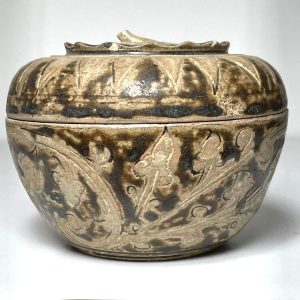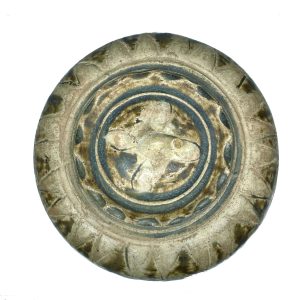Antique Sawankhalok Lidded Bowl, Fruit Stem Handle, Thailand #3170
Original price was: $385.00.$325.00Current price is: $325.00.Ht: 3.375” Dia: 4.625” | FREE SHIPPING within continental U.S.! and beyond
This Sawankhalok glazed stoneware lidded bowl with elegant mangosteen shape, cream and brown glazes and stylized incised floral and geometric designs, and raised calyx was used to store spices, powders and cosmetics, betel nuts and medicine.


